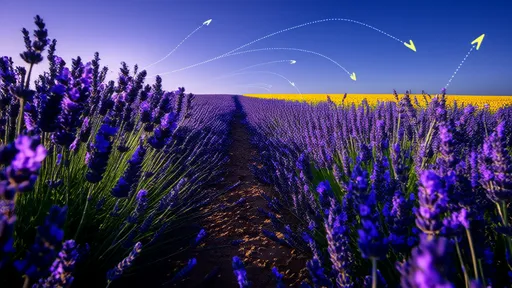In the heart of the Himalayas, where snow-capped peaks pierce the sky and ancient traditions whisper through the wind, a new fusion of technology and spirituality has emerged. The "Prayer Flag Printer," an innovative project blending digital innovation with Tibetan Buddhist culture, allows participants to scan a QR code and virtually project prayer flags onto distant mountain ranges. This initiative bridges the gap between modern connectivity and timeless ritual, offering a unique way to engage with sacred practices from anywhere in the world.
The concept is simple yet profound. Traditionally, Tibetan prayer flags—colorful cloth panels inscribed with mantras and symbols—are hung in high places, where the wind carries their blessings across the land. The Prayer Flag Printer reimagines this practice for the digital age. By scanning a QR code, users can select a design, inscribe their own intentions, and "release" their virtual flags onto a live-feed projection of a Himalayan peak. The flags flutter in the digital wind, a symbolic gesture that transcends physical boundaries.
This project is more than just a technological novelty. It speaks to the growing desire for meaningful connection in an increasingly disconnected world. For those unable to travel to the Himalayas, the Prayer Flag Printer offers a way to participate in a centuries-old tradition. Monks in remote monasteries have even begun blessing the digital flags, adding another layer of authenticity to the experience. The result is a hybrid ritual—one that honors the past while embracing the possibilities of the future.
The response has been overwhelming. From bustling cities to quiet villages, people have embraced the chance to send their prayers skyward. Social media has been flooded with images of digital flags adorning majestic peaks, accompanied by heartfelt messages of hope, healing, and remembrance. Some users have shared stories of how the act of creating a virtual prayer flag brought them solace during difficult times, while others see it as a way to connect with a culture they admire from afar.
Critics, however, question whether a digital substitute can carry the same weight as the physical tradition. Prayer flags are traditionally made from specific materials, their colors fading over time as the wind disperses their blessings. Can pixels and projections replicate this sacred cycle? The creators of the Prayer Flag Printer argue that intention is what matters most. Whether the medium is cloth or code, the act of sending goodwill into the world remains unchanged.
As the project evolves, so too does its potential. Discussions are underway to expand the selection of mountains, allowing users to choose where their virtual flags will fly. There are also plans to integrate augmented reality, enabling participants to see their flags superimposed onto their local landscapes. The goal is not to replace tradition but to create new avenues for participation—ones that resonate with a global, digitally connected audience.
In the end, the Prayer Flag Printer is a testament to the enduring power of ritual. It reminds us that even as the world changes, the human need for connection, meaning, and transcendence remains constant. Whether through cloth or screens, the prayers continue to rise, carried by the wind—real or virtual—toward the heavens.

By /Jul 16, 2025

By /Jul 16, 2025

By /Jul 16, 2025

By /Jul 16, 2025

By /Jul 16, 2025

By /Jul 16, 2025

By /Jul 16, 2025

By /Jul 16, 2025

By /Jul 16, 2025

By /Jul 16, 2025

By /Jul 16, 2025

By /Jul 16, 2025

By /Jul 16, 2025

By /Jul 16, 2025

By /Jul 16, 2025

By /Jul 16, 2025

By /Jul 16, 2025

By /Jul 16, 2025